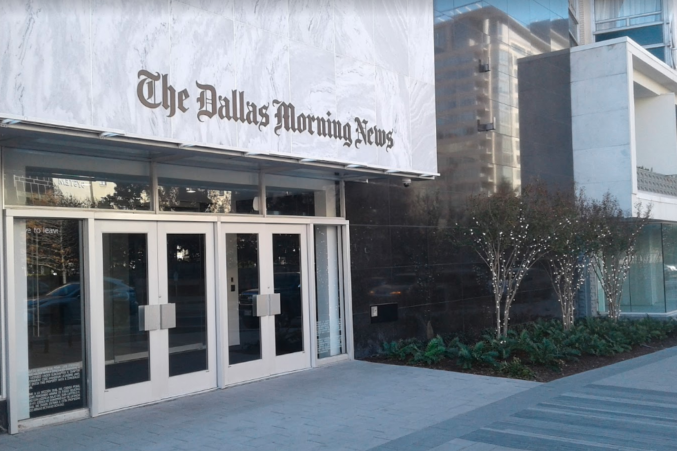Just the Facts
What you need to know before you go.
WHERE ID STAY
The Taos Inn is a classic Taos spot, right on the main road through town. It’s not fancy, but nothing is here. Call 1-800-TAOSINN.The La Fonda Hotel is nice, too, and it’s located on the plaza. Call 1 -800-833-2211.
WHERE TO EAT
With a menu that could hold no in a much bigger city, Joseph’s Table may be the best restaurant in Taos. Call 505-7514512 for information. Reservations recommended, and only dinner is served,The Apple Tree is a Taos standard. Ask to sit in the courtyard-one of the prettiest places in town to eat. Call 505-758-1900.
WHAT ID BRING
You don’t need much in Taos, other than good walking shoes. Dress is casual almost everywhere. For the fisherman, Los Rios Anglers provides guided flyfishing trips in Northern New Mexico and Southern Colorado. Call 1-800-748-1707.
DON’T MISS
The San Francisco de Asis Church south of town. Whatever you do, set aside some time for a trip to the most evocative adobe structure in the West. It’s four miles south of town on Highway 64. and anyone can tell you how to get there.
IT’S SATURDAY. THREE O’CLOCK, AND THE LOBBY AT THE TAOS LA FONDA HOTEL IS abuzz with tourists. In one corner, a woman sits in a deep leather armchair, feet propped on a coffee table. A group of children stands before a glass-encased matador’s outfit, rhinestones sparkling in the late afternoon sun. ◆ And here in a back room behind the registration desk, I’m standing and looking at four walls full of paintings by D.H. Lawrence, who lived in Taos in 1924.They are, perhaps, the most famous canvases in New Mexico, and they’re worth millions. I’ve paid three dollars to see this art, and judging by the sounds from the adjoining lobby, I’m the only tourist here who even knows it exists.
Lawrence painted the erotic canvases between 1925 and 1928. They were exhibited at the Warren Gallery in June 1929, soon after Lawrence’s scandalous novel, Lady Chatterly’s Lover, was published. Three weeks later, police raided the show and confiscated the art. Lawrence was ordered never to show the paintings in England again. The story made headlines in London, Paris, and New York, In one short year, Lawrence had become the Robert Mapplethorpe of post-war Europe.
Now, these canvases, the subject of the most contentious censorship battle of the early 20th century, hang here-in a Taos, N.M., hotel, in a white-walled room with a plastic rotating fan on the floor. The hotel’s proprietor, Saki Karavas, bought the paintings from the estate of Lawrence’s widow, Baroness Frieda von Richthofen, after she died in 1956. Every day, dozens of visitors pass through the lobby on their way to a gallery or a restaurant, unaware that the artwork hangs in this drab room. And this, more than anything, is a testament to the kind of place Taos is: It is a town of understatement, a high desert village that keeps its surprises for the curious. A place that attracts the passionate of all persuasions, Taos has always been a haven for artists, writers, eccentrics, and outlaws. It’s not surprising that the village is also home to outlaw art. A place that even loners can call home.
And it’s only a halt-day’s travel from Dallas.
Most people know Taos for its art galleries. There are more exhibit spaces here than there are restaurants. But the best way to truly understand this town’s reputation as an artist’s colony is to visit the Taos Inn. Situated on the main road through town, the hotel is a mix of all the elements that make Taos a destination for hippies and high-culture enthusiasts-a distinct sense of history mixed with local artwork and a less-is-more mentality.
On the nights I stayed at the Taos Inn, a jazz band played in the lobby of the hotel. The crowd-seated in chairs positioned toward the stage, on the floor, at tables on the front patio-was classic Taos: a mix of 40-something art types, tourists with their children, Gen-X ski bums. Waitresses weaved through the crowd, carrying trays of margaritas and microbrews, and a couple danced near the stairwell, the rhythmic thump of the bass drum providing the beat. Another couple-chardonnays in hand-circled the room, stopping at each painting and photograph on the wall before moving on, swaying to the mellifluous sound of jazz and the buzz of quiet conversation.
Sitting here, sipping a Colorado ale, it’s easy to forget that this is a hotel lobby. It feels like a gallery opening or Saturday night at a hot new jazz club. The Taos Inn is Artist Central for this small town, and whether you’re after high culture (like the weekly slide show presentations by local artists) or just a good time, it’s the place to be on weekends.
But the Taos Inn isn’t the only place to see local art-only die most festive. On foot, you can visit as many galleries as you have time for-there are more than 50 in town. If you’re driving, you can take in the seven museums in Taos. The Fechin House, just north of town, is one of the best. Housed in an old adobe structure set back from the main road, the museum features not just the Russian-born Nicolai Fechin’s charcoal drawings and wood carvings, but also the furniture, doors, and windows he made by hand for the house when he moved here in 1927.
Despite all the galleries and studios, experiencing Taos art shouldn’t just be a matter of looking at canvases and sculpture-it’s as impressive to check out the places that inspired so much great work. Exploring the area, you get the feeling you’ve seen Taos and the surrounding desert before. The reason? You probably have.
In the early part of the century, the Taos Society of Artists exhibited classic landscapes and portraits nationwide, bringing more interest to the area, and by the mid-century, when the Taos Moderns came to use color and light to convey the unique landscape here, the town had established itself as a place made for aspiring artists and collectors. Now, the village claims to have more artist residents per capita than anywhere in the world, including Paris.
One of the archetypal Taos settings is the San Francisco de Asis Church, four miles south of town. Built in 1815 in Ranches de Taos, the village settled by the Spanish 100 years before that, the church has been the subject of paintings by Georgia O’Keeffe and photographs by Ansel Adams. In my entire weekend here, nothing was quite as affecting as the half-hour I spent in the courtyard of the old church, with the Sangre de Cristo Mountains behind me and the flat adobe facade of the church cast against the blue sky. For a place that’s practically been canonized by American artists, you’d think the church would be something like a tourist attraction, with kitsch or information booths nearby, but it’s not. The church feels and looks like a holy place, a site that makes you settle into yourself. Sitting in one of the wooden benches scattered in the courtyard, I listened to the sound of early-morning quiet-the faint cooing of pigeons perched in the church’s bell towers, the gurgling rock fountain near the surrounding adobe wall. It’s rare to find this kind of quiet, and when you do, you remember it for a long time.
You can find the same kind of rare and mysterious quiet at the Rio Grande Gorge, ten minutes outside town. Six hundred fifty feet above the water, the bridge over the gorge is the second-highest in America. Standing to the side of it, nearly a half-mile above the Rio Grande, I could feel the strong push of wind up from the river. Sagebrush colored the high desert all around me in shades of purple and green, and the rocks descending to the river were bright orange and red in the late afternoon light. The river was a thin silver ribbon in the bottom of the gorge, perfectly still, and distant clouds moved silently in the distance, dragging wispy tendrils of rain across the desert floor. The only sound was the sibilant whisper of wind punctuated by distant, muffled thunder.
When you’re in a place like the gorge, it’s hard to imagine Taos-which lately has experienced some of the symptoms of creeping urbanization-changing much. Sure, there’s a Wal-Mart now, and the Taos Pueblo just outside of town has opened a casino, but the obstinately individualistic town still isn’t over-commercial, and it doesn’t feel like it will be.
You can sense me town’s stubbornly independent spirit everywhere-even in the best restaurants. The perennial Taos favorite, the Apple Tree, is in an old house north of the plaza. Guests prefer the adobe-walled courtyard, where they dine on a mix of Rocky Mountain and Southwestern eclectic-duck fajitas with fiery jalapeno sauce, filet mignon with brandy-shiitake cream. Down the road is Joseph’s Table, a small restaurant that looks like a Tuscan trattoria decorated for the Sedona set. The food-Tuscan fare with vegetarian options for the healthy crowd-is excellent, and with its laid-back staff and atmosphere, Joseph’s Table is a good place to eat alone. There are a lot of loners in Taos, and this is the kind of place that’s made for them as much as it is for families and couples.
On my last day in Taos, I went fly-fishing with a guide from Los Rios outfitters in the Rio Hondo. Standing in the cool stream, casting a dry fly to a clear pool across the current, I looked up and saw something that tells me Taos will keep its unique culture. Trudging up the mountain road was a group of two dozen Hispanic Catholic worshippers called Los Pénitentes. The group was led by a man clutching a six-fool cross with the bloodied figure of Christ on it. The worshippers, walking in silence by the stream, didn’t even see me. Utterly focused, heads bowed, looks of Old World piety on their faces, they seemed a throwback, a scene from another century.
Just then, coming down me road towards them, a mountain biker in tight biking shorts sped by on his gleaming machine. He rounded the curve, shot past the quiet worshipping group, gold earring glinting in the sunlight, ponytail flapping in the wind behind him as he sped past. On the back of his T-shirt, this message: “Free Tibet.”
Los Pénitentes paused for only a second, watched as the hippie biker sped past, then continued their pilgrimage in the Sangre de Cristo Mountains. Two cultures-old and new-both with their hearts in the right place.
Get our weekly recap
Brings new meaning to the phrase Sunday Funday. No spam, ever.
Related Articles

D CEO Award Programs
Nominations Open: D CEO’s 2024 Corporate Counsel Awards
The annual program honors top in-house attorneys in Dallas-Fort Worth, from outstanding up-and-comer to outstanding general counsel.

Media
5 Things to Know About ‘Why It Matters’ That Our Mayor Lies
Or: why does the Dallas Morning News treat readers like children?
By Tim Rogers

Home & Garden
This Must Be the Place—One Family’s Post-Pandemic Hyde Park–Inspired Home
After world events forced a Park Cities family to take shelter, they responded by putting together a team to create the ultimate post-pandemic Hyde Park-inspired gathering spot.
By Laura Kostelny


